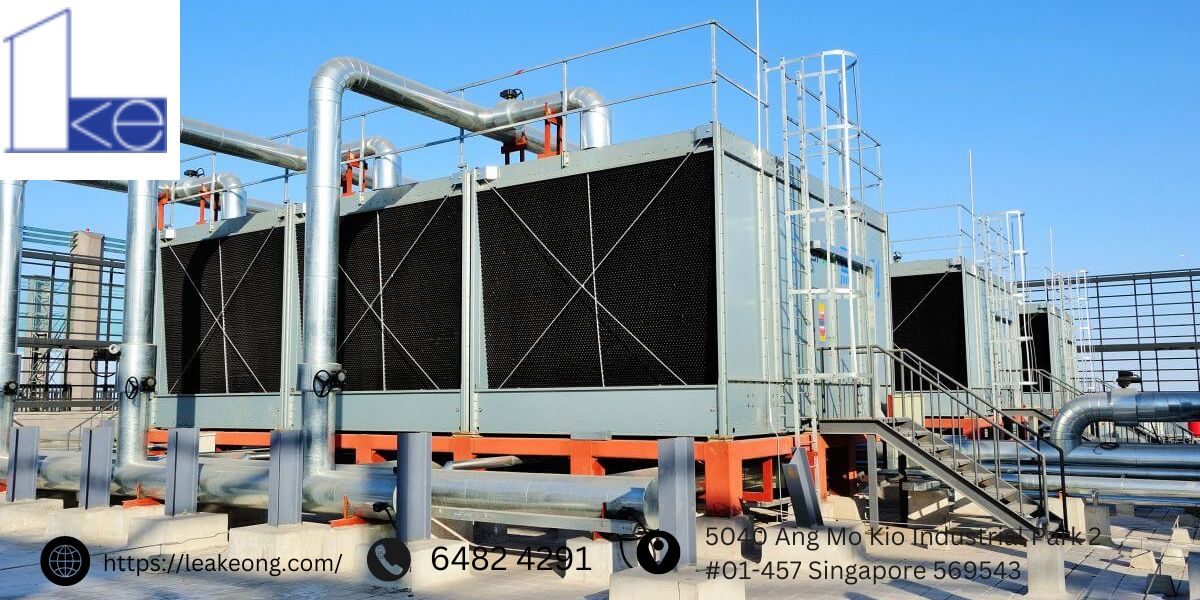
Singapore’s tropical climate demands robust cooling solutions, making cooling towers in Singapore indispensable for various industries and commercial sectors. These towering structures play a crucial role in managing heat and humidity, ensuring optimal operational conditions in buildings across the island nation. Here’s a comprehensive look at why cooling towers are essential and their specific benefits in Singapore:
Efficient Heat Management
Cooling towers excel in dissipating excess heat generated by industrial processes, HVAC systems, and power plants. Their efficiency lies in the principle of evaporative cooling, where hot water enters the tower and is exposed to ambient air, causing a portion of the water to evaporate and thereby lowering its temperature. This cooled water is then circulated back into processes or used for air conditioning, effectively regulating temperatures in Singapore’s hot and humid environment.
Energy Efficiency
In Singapore, where energy conservation is pivotal, cooling towers offer significant energy savings compared to traditional cooling methods. By leveraging natural air and water interactions, they reduce the need for mechanical refrigeration, which consumes more electricity. This makes cooling towers a sustainable choice for businesses aiming to reduce their carbon footprint and operating costs.
Adaptability to Urban Landscapes
Due to their vertical design and space-saving footprint, cooling towers are well-suited for Singapore’s densely populated urban areas. They can be integrated into building designs or installed on rooftops, optimizing land use without compromising operational efficiency. This adaptability allows businesses to maximize their usable space while meeting cooling requirements effectively.
Environmental Sustainability
Cooling towers contribute to environmental sustainability by conserving water resources. Through the evaporation process, they minimize water consumption compared to once-through cooling systems, which require continuous fresh water intake. Additionally, some cooling towers incorporate water treatment technologies that recycle and reuse water, further reducing environmental impact.
Long-term Cost Savings
Investing in cooling towers yields long-term cost savings for businesses in Singapore. Their durable construction and minimal maintenance requirements translate into reduced operational expenses over their lifecycle. By ensuring reliable heat dissipation and efficient cooling performance, cooling towers enhance equipment longevity and reliability, minimizing downtime and repair costs.
Regulatory Compliance
In Singapore, cooling towers are subject to stringent regulations aimed at ensuring public health and safety. Compliance with local standards not only enhances operational reliability but also mitigates risks associated with cooling tower operations. Understanding and adhering to these regulations is essential for businesses to maintain operational continuity and regulatory compliance.
Supporting Singapore’s Economic Growth
As a key component of infrastructure development, cooling towers support Singapore’s economic growth by enabling industries to operate efficiently and sustainably. They play a crucial role in sectors such as manufacturing, healthcare, data centers, and hospitality, where precise temperature control is essential for maintaining productivity and customer satisfaction.
Conclusion
In conclusion, cooling towers are indispensable assets in Singapore’s quest for efficient climate control solutions. Their ability to manage heat effectively, coupled with energy efficiency and environmental sustainability, makes them a preferred choice for businesses across various sectors. By investing in cooling towers, businesses can enhance operational efficiency, reduce environmental impact, and contribute to Singapore’s sustainable development goals.
For businesses looking to optimize their cooling strategies in Singapore’s hot climate, cooling towers offer reliable, cost-effective solutions that align with both operational and environmental objectives.